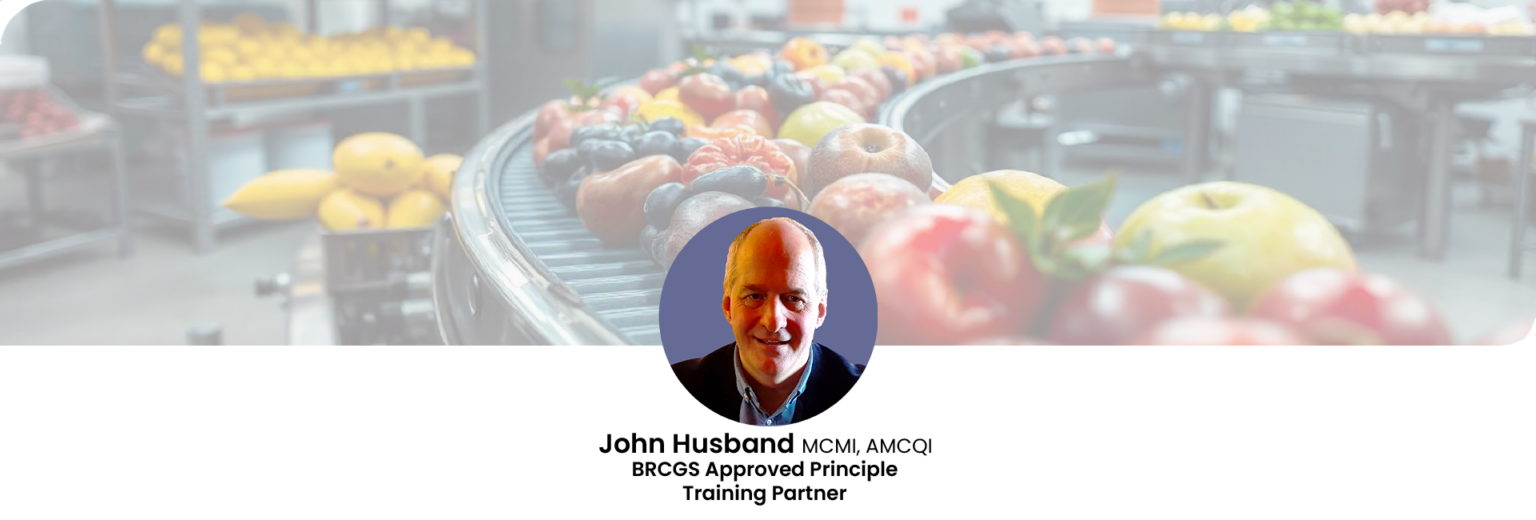
What areas of a business do BRCGS auditors assess?
If you’re applying for BRCGS certification, you’ll need to prove your company meets the requirements of the BRCGS Global Standard for Food Safety.
A third-party BRCGS auditor examines different aspects of your company to ensure this is the case.
If you have an audit coming up, it’s helpful to know what auditors look for so you know what to expect.
A BRCGS food safety audit broken down into three areas:
- HACCP and Quality Management systems
- Production facilities covering food production, packing and storage.
- Traceability (vertical audit)
Let’s take a closer look at what each area covers.
1. HACCP and quality management systems
The HACCP system is the cornerstone of any food safety management system. It identifies, evaluates and controls hazards which are significant for food safety.
A BRCGS auditor assesses your HACCP system in two stages.
The first is an office-based activity. The auditor carries out a desktop review of your HACCP Plan and quality management system/pre-requisite programme.
The second part is a factory audit. Here, the auditor ensures all risks have been identified, risk assessed and—where appropriate—eliminated, or controls implemented to reduce risk to acceptable levels.
They do this by going through each step in the process, checking that each step has been detailed on the HACCP process flow diagram. So, you need to be putting into practice what you have down on paper.
Another key part of HACCP Food Safety Management Systems is auditing senior management commitment and continual improvement to food safety culture.
Auditors assess the methods and systems used for evaluating the maturity level of your site’s food safety culture, and where it is on a scale from negative to positive.
A food safety culture plan then needs to be in place to demonstrate how your site intends to improve food safety culture.
2. Production facilities covering food production, packing and storage
The product facilities part of the audit requires the auditor to spend 50% of their audit time assessing food production, packaging and storage areas.
It’s important the auditor has access to all areas of your site for this. It’s good practice for the auditor to tick off all areas they’ve visited on a HACCP Flow chart and site map to ensure none are missed.
Here’s a summary of the key areas the auditor will cover:
Work environment: Assessing the hygiene and fabrication standards of floors, walls, door, ceilings, drains, etc.
Equipment: Assessing the standard and hygienic condition tools, storage and machinery. Where possible, the auditor will open up and look inside equipment checking for hygiene standards, maintenance issues and evidence of pest infestation.
Critical Control Points (CCP): Assessing the set up and operation against requirements detailed by Standard Operating Procedures (SOPs).
Management and control of allergens: Assessing physical or time segregation while allergen-containing materials are being stored, processed or packed. Checking dedicated PPe and equipment, as well as scheduling of production and.segregation of allergens
Product or shift change over: Witnessing change overs to ensure lines have been cleaned and set up for the next product. Plus, assessing if correct packaging is being used.
Waste management: Assessing if appropriate controls are in place to prevent cross contamination when waste is being moved.
Temperature control: Assessing procedures to ensure products are stored and transported under conditions that prevent microbial growth, physical damage and other hazards.
Pest control: Assessing if your pest plan is being fully implemented and managed with no evidence of pests in food production areas.
Competency of staff: Witnessing and interviewing personnel to determine competency levels and ability to work to the company procedures.
3. Traceability (vertical audit)
In the final part of the audit, the auditor needs to carry out a full traceability assessment of one of the products manufactured by your site. This is also known as a vertical audit or traceability challenge.
The collection of traceability records needs to be completed within a four hour window. The auditor should select a high-risk product example. For example, a product that has a gluten-free claim.
This allows the auditor to review the product and manufacturing process validation undertaken by your site to support the claim, as well as the relevant production records (e.g., raw material intake, production records, finished product checks and specifications).
When they’ve completed the vertical audit, the auditor should check the information on two labels.
Next, a mass balance on an ingredient is also required. This is the ability to account for all quantities of raw materials purchased and reconciled against finished product, including stored product, waste, rework and work-in-progress.
Correct calculations ensure that, in the event of a recall, you can account for all potentially affected raw materials and finished product. Mass balance should include raw materials, primary packaging and labels.
What happens next?
The audit process for a food business typically lasts a minimum of two days. Although, for a larger business, this could extend to up to four days.
Once the audit is complete, the auditor creates a final review of their findings. They’ll review this with you in a closing meeting.
If there are non-conformities, these need to be closed out and reviewed before a certification body can award your certification grade. The certification body will also upload the detailed audit report created by the auditor to the BRCGS Directory, where you or your customers can access it.
For a full breakdown of the auditing process, check out our post on what a BRCGS audit looks like.
Want to learn more about food safety?
Check out our range of BRCGS, Food Safety and HACCP courses by clicking the button below.
tolearn inovative Food Safety Management Platform
Book a tolearn Food Safety Management Management Platform live demo at a date and time which is best for you to see how tolearn can assist your company with onboarding of staff, employee competency and improve food safety culture.


